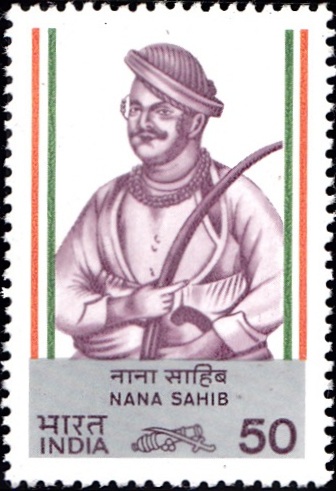
Nana Sahib
A commemorative postage stamp on Nana Saheb, an Indian Peshwa of Maratha empire, leader of Indian Rebellion of 1857 [a part of the series ‘India’s Struggle for Freedom‘] :
 Issued by India
Issued by India
Issued on May 10, 1984
Issued for : Indian Posts & Telegraphs Department is privileged to issue four commemorative stamps in the memory of these great Freedom Fighters.
Type : Stamp, Mint Condition
Colour : Single colour
Denomination : 50 Paise
Name : Dhondu Pant
Born on May 19, 1824 at Bithoor, Kanpur district, Uttar Pradesh, India
Died on 1859 at Naimisha Forest, Uttar Pradesh, India
About :
- The First War of Independence (1857-58) was the first general widespread uprising against the rule of the British East India Company. The Doctrine of Lapse, issue of cartridges greased with animal fat to Indian soldiers, introduction of British system of education and a number of social reforms had infuriated a very wide section of Indian people, who rose in revolt at a number of places all over India. The East India Company was brought under the direct rule of the British Crown as a result of this uprising.
- Of the very large number of freedom fighters, who led the struggle, four are being commemorated through the present series, which is a part of the larger series on India’s Struggle for Freedom.
- A Maratha, one of the leaders of the First War of Independence, Nana Saheb was born in 1824 to Narayan Bhatt and Ganga Bai. In 1827 his parents went to the court of the last Peshwa Baji Rao, who adopted Nana Saheb, thus making him her-presumptive to the throne.
- Nana Saheb was well educated. He studied Sanskrit and was known for his deep religious nature. On the death of the last Peshwa, Baji Rao–II, in 1851 the Company’s Government stopped the annual pension and the title. Nana Saheb‘s appeal to the Court of Directors was not accepted. This made him hostile towards the British rulers. When the First War of Independence broke out, he assumed leadership of the mutineers in Kanpur. After seizing Kanpur, which had a small British garrison, Nana Saheb proclaimed himself as Peshwa and called for the total extermination of the British power in India. Kanpur was recaptured by the British General Havelock and the last serious engagement (16 July, 1857) resulted in total route of Nana‘s forces. Nana rode away to an unknown destination in Nepal in 1859 and probably perished in the jungle.


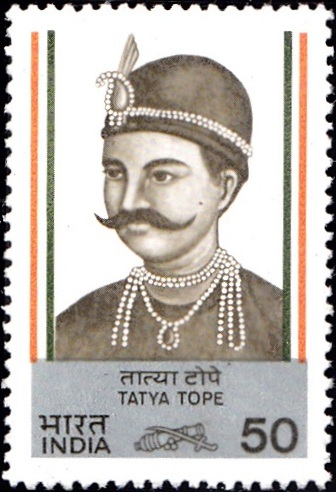


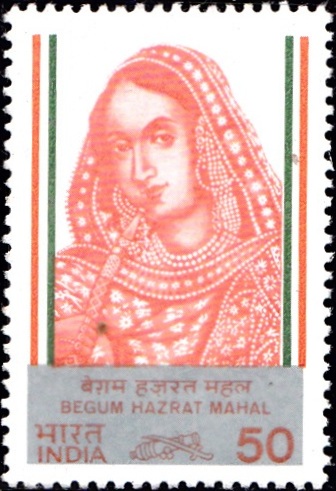
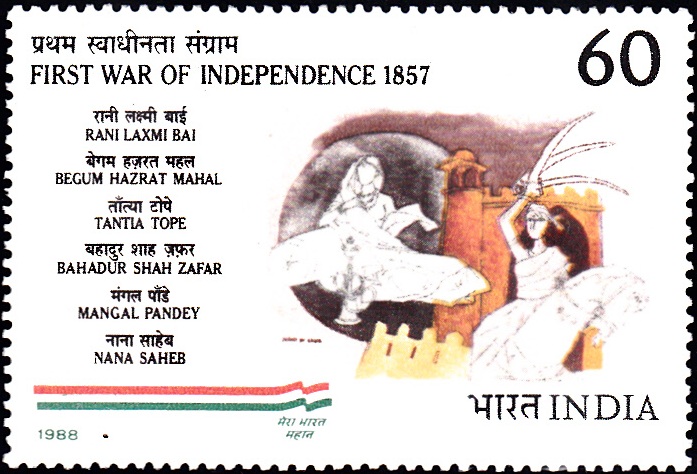
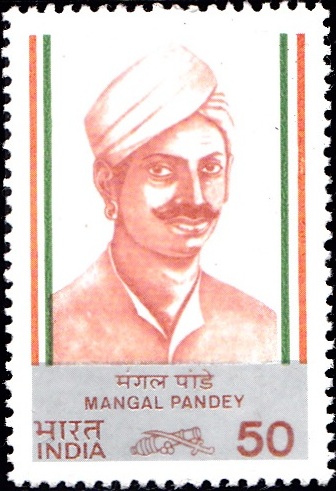
[…] set up her son, Prince Birjis Qadr, as the King of Avadh. Hazrat Mahal worked in association with Nana Saheb but later escaped from Lucknow and joined the Maulavi of Faizabad in the attack on Sahajahanpur. […]
[…] Nasik, in a family of Chitpavan Brahmins, a community which has produced noted revolutionaries like Nana Sahib (of 1857 fame) and Lokmanya […]
[…] Bareilly and many other parts of the Gangetic heartland, and the storm centers were spearheaded by Nana Saheb, Diwan Azimullah, Tantia Tope, Kunwar Singh and Rani Laxmi Bai. The big battles between the British […]